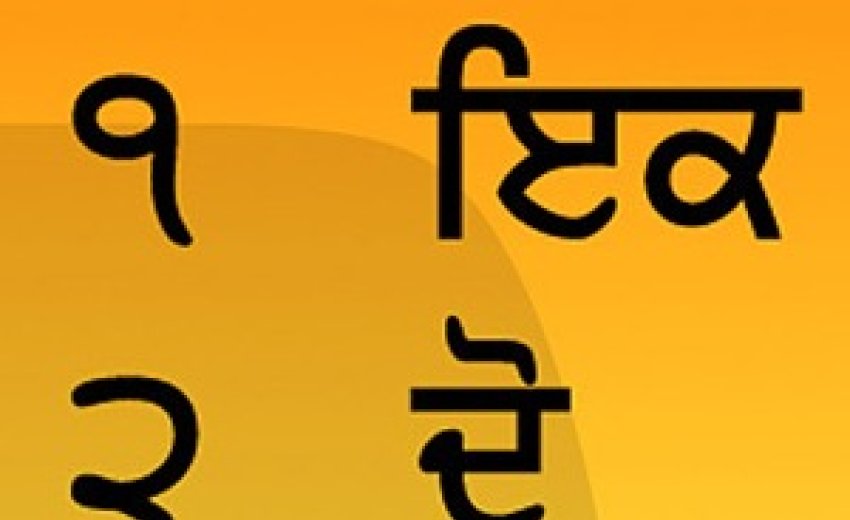 KURUKSHETRA: "People of the Punjab were not mute when the world-known ancient Indian Valley Civilization flourished in the north-west parts of the country. The Punjabis used to speak their own language which is older even than the Dravidian's".
KURUKSHETRA: "People of the Punjab were not mute when the world-known ancient Indian Valley Civilization flourished in the north-west parts of the country. The Punjabis used to speak their own language which is older even than the Dravidian's".
 This was claimed by the eminent Punjabi litterateur, Dr. Satinder Singh Noor while delivering his keynote address in the inaugural session of the 2-day national seminar on the New Perspectives of Punjabi Language, Literature and Culture, being organised by the Department of Punjabi, Kurukshetra University.
This was claimed by the eminent Punjabi litterateur, Dr. Satinder Singh Noor while delivering his keynote address in the inaugural session of the 2-day national seminar on the New Perspectives of Punjabi Language, Literature and Culture, being organised by the Department of Punjabi, Kurukshetra University.
About 30 scholars of Punjabi language and literature are participating in this seminar from Haryana, Punjab and Delhi.
Refuting the ongoing theory that Punjabi was Indo-Aryan language, the Vice-Chairman of the Bhartiya Sahitya Academi, Delhi Professor Noor said that the Punjabi was the oldest language of the world which existed in one form or the other before the use of Tamil and even Sanskrit because it existed before the emergence and blooming of the most ancient Indian Valley Civilization in this part of India. He cited examples with the help of many prevalent words using phonetics and morphological terms.
About 2000 words were being studied and scrutinised by scholars of Tamil and Telugu languages and they also agreed to the foregoing conclusions to this effect, he disclosed.
Dr. Noor said Punjabi is spoken by the Punjabis who were residing in 160 countries all over the world. The diaspora is spreading this language abroad but intermingling of words with local foreigners has led to coining new words like globalikaran (globalization) and glocalikaran (localization of globalization) with the change in their thoughts and practice of this language.
Quoting a report of the UNESCO, the Punjabi scholar said Punjabi has over 13 lakh words, spoken and written both, and therefore, it can never die like other languages of the world. Not even hybridity of words can harm it.
The Punjabi scholars residing abroad were earlier creating Punjabi literature in prose and verse, but lately they have started writing in foreign language as it earned them name and fame both, but it is causing harm to the Punjabi literature abroad.
Dr. Noor said though Punjabi was spreading all over the world, in one way or the other, but its sweetness is relished only where it is being practised in purer tribal form, either in agriculture sector or in some parts of Punjab which the modern urbanites term as backwards.
Lt. General (Rtd), Dr. Devender Dayal Singh Sandhu, Vice-Chancellor of Kurukshetra University said that the use of Punjabi language was increasing with the efforts of the scholars and the state governments. Speaking as the Chief Guest, Dr. Sandhu said Haryana has made the Punjabi as its second language which has opened new vistas for its flourishing in new horizons right from schools to the universities as well as in the government offices.
He assured all financial and other assistance for the promotion of the Punjabi language in future.
Presiding over the inaugural function, the former Vice-Chancellor of Kurukshetra University Professor Bhim Singh Dahiya emphasised the need of setting up a department of translation so that the best literature could reach the masses and the intelligentsia of the world. He said Rabindra Nath Tagore got the Nobel Prize only when his Bengali lietrature was translated into English and forwarded by a famous poet, Yeats. He also advocated setting up city universities to promote original thinking which Indian youth possessed in abundance.
Professor Amarjeet Singh Kaang, Director of the Seminar said there was no threat to the popular Punjabi language from outside but the emerging pollution to our culture by the process of globalization is certainly a cause of worry for all of us to save the purity of the Punjabi language and culture.
We have to search newer ways to protect and promote this language and culture in the changing scenario. He expressed satisfaction that though the Punjabi youths, mostly abroad and in Indian metros, were possessed by the western culture but some of the young scholars were emerging steeply in the Punjab these days with novel creations in Punjabi culture and literature.
